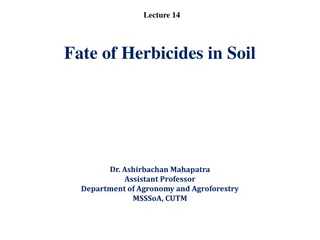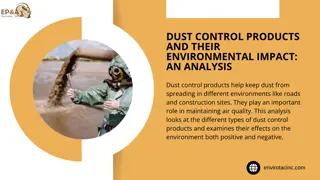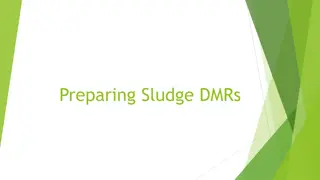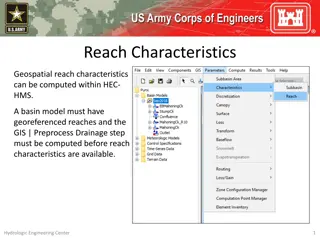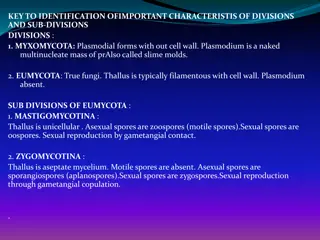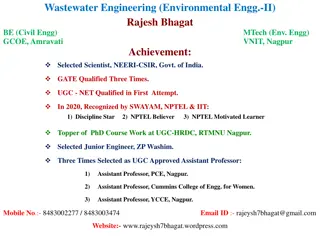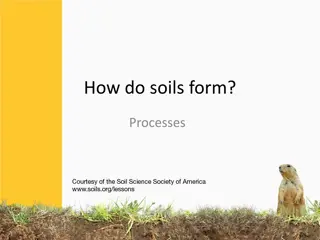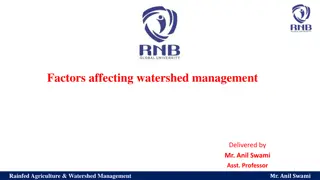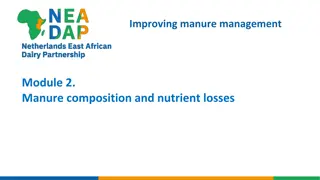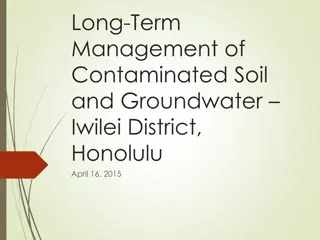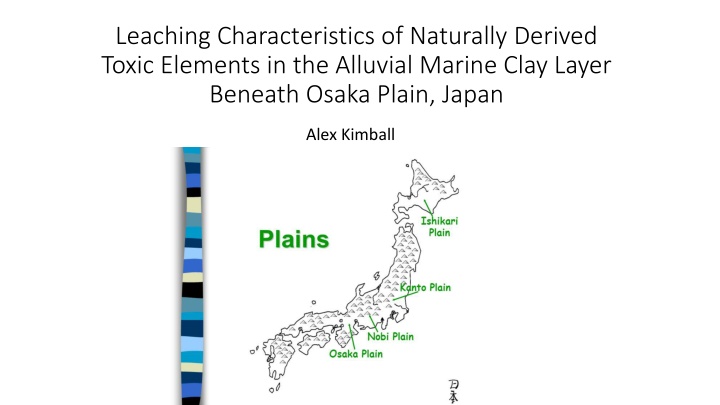
Leaching Characteristics of Naturally Derived Toxic Elements in Osaka Plain
Explore the leaching characteristics of naturally derived toxic elements in the alluvial marine clay layer beneath Osaka Plain, Japan. The study examines groundwater pollution factors associated with excavated soil, concentrations of arsenic, lead, boron, and chromium, and potential health risks. Various methods, such as sediment sampling, chemical analyses, and extraction experiments, are utilized to assess the long-term risks of pollutants from soils.
Uploaded on | 1 Views
Download Presentation

Please find below an Image/Link to download the presentation.
The content on the website is provided AS IS for your information and personal use only. It may not be sold, licensed, or shared on other websites without obtaining consent from the author. If you encounter any issues during the download, it is possible that the publisher has removed the file from their server.
You are allowed to download the files provided on this website for personal or commercial use, subject to the condition that they are used lawfully. All files are the property of their respective owners.
The content on the website is provided AS IS for your information and personal use only. It may not be sold, licensed, or shared on other websites without obtaining consent from the author.
E N D
Presentation Transcript
Leaching Characteristics of Naturally Derived Toxic Elements in the Alluvial Marine Clay Layer Beneath Osaka Plain, Japan Alex Kimball
Abstract Marine clay layer "Ma13" analyzed beneath Osaka Plain 0 to 25 meters deep. Groundwater present Examining factors in groundwater pollution associated with excavated soil
Abstract Continued Concentrations of arsenic, lead, boron, chromium analyzed. Looking at potential detriment to health and age of samples "Fractions" of toxic elements compared to results of "sample batch leaching data"
Introduction Clay and silt most abundant between 5 and 20 meters. Sand common between 0 and 6 meters and 19 and 25 meters. "Single step partial extraction methods" allow quick analysis of presence of toxic elements and impact on humans if ingested Aim is to determine long-term risks of pollutants from soils
Methods Sediment samples cored using "thin-walled tube sampler," put into larger tube for chemical analysis Sample packed with de-oxygenizer to prevent oxidation of minerals Becomes difficult to assess if oxidation occurs
Methods Continued Refractive indices of volcanic samples determined with refractometer. Allowed ages of sediments to be found Bulk sediment chemical analyses, sequential chemical extraction experiment (SCEE) and batch leaching tests Bulk sediment analysis conducted through x-ray powder diffraction
Results Refractive indices shows Kikai Caldera eruption 7,300 years ago Deposition in seawater began 7,000 years ago Boron and Chromium: 25-75 ppm Lead: 18-28 ppm Arsenic: 5-12 ppm
Results Continued Boron water soluble. Derived from seawater Arsenic in sulfides indicates volcanic and hydrothermal activity 0.1 vs. 0.45 micrometer filter for lead in groundwater
Conclusions Concentrations much higher in experimental solutions compared to standard limits Leaching of Pb, As and B should be "accelerated" Effect on health of groundwater soluble elements has been "underestimated" Need 0.1 micrometer width filter for drinking water


